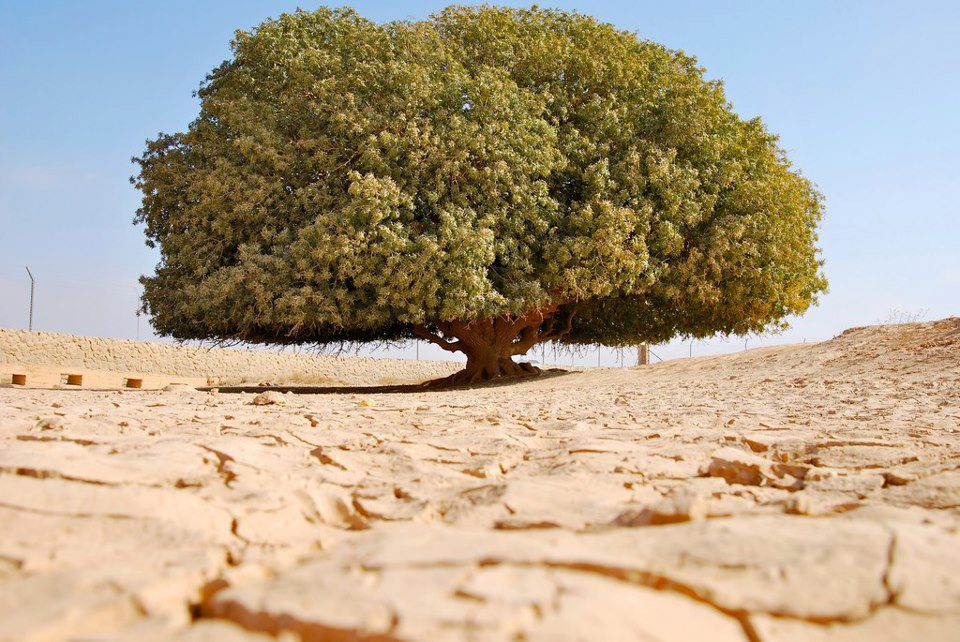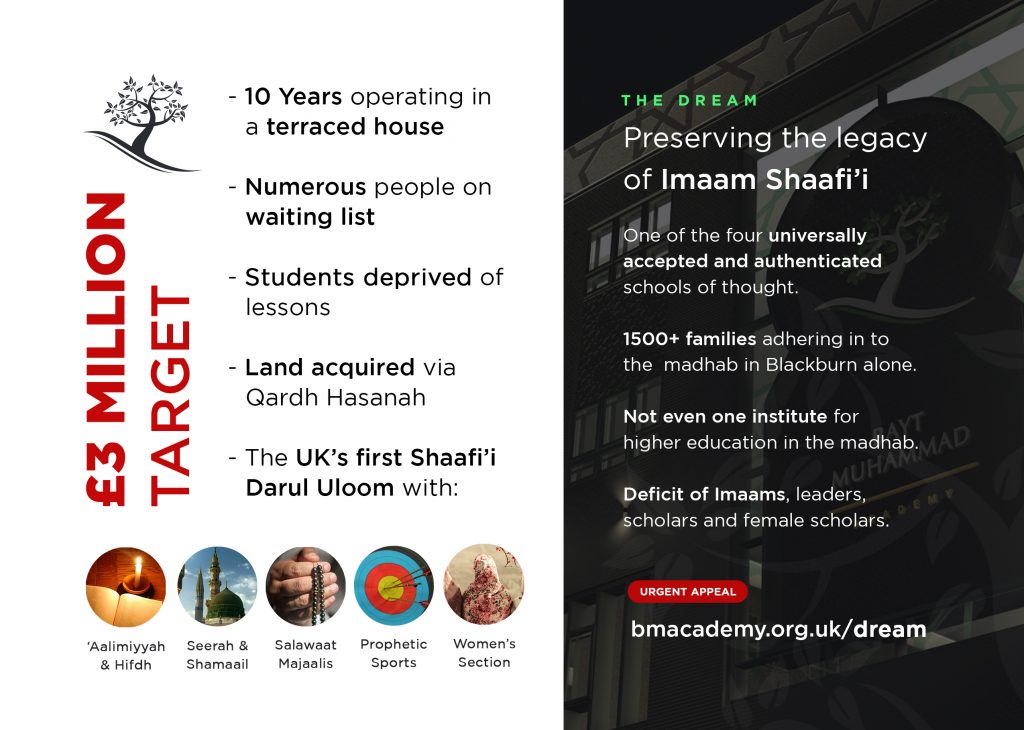بِسْمِ اللّٰهِ الرَّحْمٰنِ الرَّحِيْم
الحمد لله رب العالمين الذي منّ علی المؤمنين اذ بعث فيهم رسولا من انفسهم يتلوا عليهم ايته و يزكيهم و يعلمهم الكتاب و الحكمة و ان كانوا من قبلُ لفي ضلال مّبين
As the years passed, the Prophet ﷺ continued to live in the care of his dear uncle; Abu Taalib, and their bond continued to develop as time went on. He ﷺ had now grown up from his initial year of childhood and had entered into adolescence, almost approaching his teenage years. During this time – when the Prophet ﷺ was approximately twelve years old – Abu Taalib had planned to travel outside of Makkah to the distant lands of Shaam on a trade-journey. Due to the dangerous and harsh nature of desert-bound travel, children would not accompany such journeys for their own protection and comfort. Thus, the Prophet ﷺ was to remain in Makkah whilst Abu Taalib went on this business trip.
This would be the first time Our Prophet ﷺ would part from his beloved uncle since the death of his ﷺ grandfather almost four years ago. When the day of departure came, Abu Taalib and his fellow tradesmen began loading their conveyances and bidding farewell to their families. As Abu Taalib mounted upon his conveyance to set-off, he saw Our Beloved Prophet ﷺ, standing amidst the crowd. Our Prophet ﷺ lost his father amidst a trade journey, and witnessed his mother leave this world during a journey. Seeing Abu Taalib departing like this was extremely difficult. His beautifully large, innocent eyes flowed with tears as he gazed upon the closest thing he had to a father departing Makkah.
As soon as Abu Taalib caught sight of his beloved nephew’s tears, his heart was inflamed by the immense love he possessed for him. He instantly decided that he could not bear to depart Makkah without his dear nephew, and ensured that he ﷺ would accompany him throughout this journey. Thus, the Prophet ﷺ departed from Makkah with Abu Taalib as they journeyed to the lands of Shaam.
Bahira: The Monk and the Monastery
Between Makkah and the distant lands of Shaam, there was a monastery in the vicinity of Howran, Busra, an Arab region which was under Roman domain at the time. This monastery was home to a Christian monk known as “Bahira”. He had dedicated his life to worship, meditation and the study of ancient, sacred scriptures, the rarest of which were housed in his monastery. He lived an ascetic lifestyle, abstaining from worldly pleasures of all kinds and surviving on the bare essentials. Through his extensive study, he had become well-versed in the signs and prophecies foretold in regards to the emergence of the Final Prophet.
Owing to the location of his quarters, the scene that canvased his windows was inclusive of many trade caravans passing by. However, today was different, for Bahira’s eyes suddenly caught sight of a trade caravan approaching in the distance, that completely captivated him. He rushed – amazed and bewildered – to ensure the caravan was sought and a meal was prepared for them in his monastery. As the caravan approached towards his monastery and parked their conveyances, his excitement grew and he could not wait to meet them.
The inhabitants of the caravan flowed into his home, welcomed by his hospitality as he seated them upon a table-spread of food. As the last person was seated and the door was closed, Bahira began scanning through each individual, closely analysing them whilst he enquired as to who they were and what tribe they belong to. They replied by informing him that they were from the land of Makkah, and belonged to the faction of Quraysh. This was none other… than the group of Abu Taalib and the Prophet ﷺ.
Bahira continued analysing each individual as though he was distinctly searching for something, or for someone. Abu Taalib and his fellow tradesmen – now sat upon the table-spread and awaiting to initiate the meal – watched Bahira in confusion and intrigue. Bahira concluded his search in an unsettled state, as though he failed to find what he was looking for. He quickly rushed to enquire if every member of their group was present, or was someone still absent? They responded by informing Bahira that all were present, except for a little boy that was kept outside with their conveyances, as they doubted the appropriation of bringing a child to such an invitation. No sooner could they complete their sentence that Bahira rushed to the door and walked outside, scanning from left to right for this child.
As Abu Taalib quickly followed behind Bahira, he emerged from the doorstep to find him in a frantic state. Bahira turned to Abu Taalib and informed him why an otherwise mundane scene of passing caravans arose his excitement to this level. He said: “As your caravan passed, there was not a single boulder or tree, except that they responded to your caravan by bowing/prostrating their forms, and a distinct cloud hovered above your caravan, shading you amidst the scorching heat of a clear sky”. He then added that this was something that Allah سبحانه و تعالی would only cause to occur for likes of a Prophet, as entailed in the various scriptures of the previous Prophets and nations that he had studied.
But his amazement was far from being concluded. As he stepped out of his monastery and panned his vision across the various camels, trees and stations of shade in his courtyard, his attention suddenly became drawn to a tree which he had known all too well. This tree – like all the others – had been visible to him for years and had maintained its appearance, and yet it was suddenly unrecognisable to him. His jaw then dropped in amazement as he witnessed its large branches curving before his sight, and as he gained the courage to look beneath them… he saw none other than the child he was searching for. His heart raced as he gazed upon the beautiful face of the Prophet ﷺ – as a twelve-year-old boy – sitting beneath this tree, and Subhaanallah; as he raised his sight above this tree, he saw that same solitary cloud, hovering directly above it, continuing to shade the Prophet ﷺ.
Bahira started pointing out this marvellous scene to Abu Taalib in excitement, highlighting the tree and the clouds as he rushed towards the Prophet ﷺ. Abu Taalib’s concerns were raised and he began rushing behind Bahira. As Bahira stood in the presence of the Prophet ﷺ, he could not contain himself and began talking rapidly and hysterically. Having seen the marvels that had already transpired, he intended to identify the remaining signs and traits he had read and studied about. However, before he could do so, he needed to ascertain the religious background of this blessed child, for he knew that Makkah was a town overtaken by paganism and idol-worship. He thus began by initiating his quest for answers with an imploration of the well-known idols worshipped in Makkah saying: “O Boy! I implore you by Al-Laat and Al-Uzza (the names of two of the most commonly concocted pagan idols) to inform me of that which I ask you!”
Even though Bahira had approached him ﷺ in a startling and abrupt manner, as soon as he mentioned the names of these idols, the Prophet ﷺ powerfully proclaimed:
لا تسلني باللات والعزى، فو اللَّه ما أبغضت شيئا بغضهما
“Do not ask me by Al-Laat and Al-Uzza! For By ALLAH! I do not despise anything as I despise them!” (Ibn Saa’d)
Bahira was delighted by this powerful statement that came from the heart of the Final Messenger ﷺ of Allah سبحانه و تعالی, a heart that could never have anything other than Allah سبحانه و تعالی within it, and could not tolerate anything to be associated with the one true Creator, Cherisher, Sustainer and Lord of the Worlds: Allah! سبحانه و تعالی
Bahira then quickly corrected himself and implored him ﷺ in the name of Allah سبحانه و تعالی, to which the Prophet ﷺ agreed to answer his questions. Bahira then questioned the Prophet ﷺ in regards to himself in great detail. Then he abruptly grabbed hold of the Prophet ﷺ, and frantically inspected his blessed body, searching for another sign he had read about. He kept searching until he uncovered the shirt of the Prophet ﷺ and stared at – and immediately kissed – the blessed emblem, known as “The Seal of Prophethood” positioned on his back, between his shoulder blades. At this point, Bahira was beyond elation and was convinced of his judgement. His heart quickly raced with fear and he rushed to Abu Taalib, pleading him not to take this blessed child any further towards the lands of Roman occupation, wherein many groups from the people of previous scriptures may recognise him ﷺ by these signs and attempt to harm him.
This entire ordeal was fearsome enough for Abu Taalib, but hearing this additional statement had ignited his protective concern for his beloved nephew, as Abu Taalib recalled the many such incidents that had taken place from the night of his ﷺ birth till the present day, whenever people of previous Abrahamic scripture had come to Makkah. Thus, Abu Taalib ensured that the Prophet ﷺ was safely returned to Makkah, wherein he ﷺ would be protected from the sight and attention of such individuals.
(Ibn Hisham, Ibn Saa’d, Abu Nu’aym, Tirmidhi)
The Blessed Tree: A Living Sahaabi
As time went on, this region of Busra – wherein Bahira’s monastery resided – slowly began to wither away, and now – over fourteen-hundred years later – the land (now part of modern-day Jordan) is completely derelict, neither the monastery, nor its settlements remain. For miles, the region is covered in a terrain of dry, cracked earth so densely affected by drought, that cars are unable to drive upon its tract. Not a single living being, nor an animal, nor a plant can be seen for miles, due to the centuries of reported drought with little to no rain. However, between the vastness of this dry, dead land, one beautiful tree stands tall, alive and healthy, with beautifully thick, strong branches – still curved down to this day – and lush leaves. This blessed tree remains alive with a beautiful pond of water at its base, through the Barakah from the touch of the Prophet ﷺ. This is the tree where the Prophet ﷺ is reported to have sat outside the courtyard of Bahira, and thus it is lovingly called; “The Living Sahaabi (Companion) of Our Beloved Prophet ﷺ.

Join us tomorrow as we continue with our next article: “Harbul Fujjar: Wars & Jahiliyyah”

